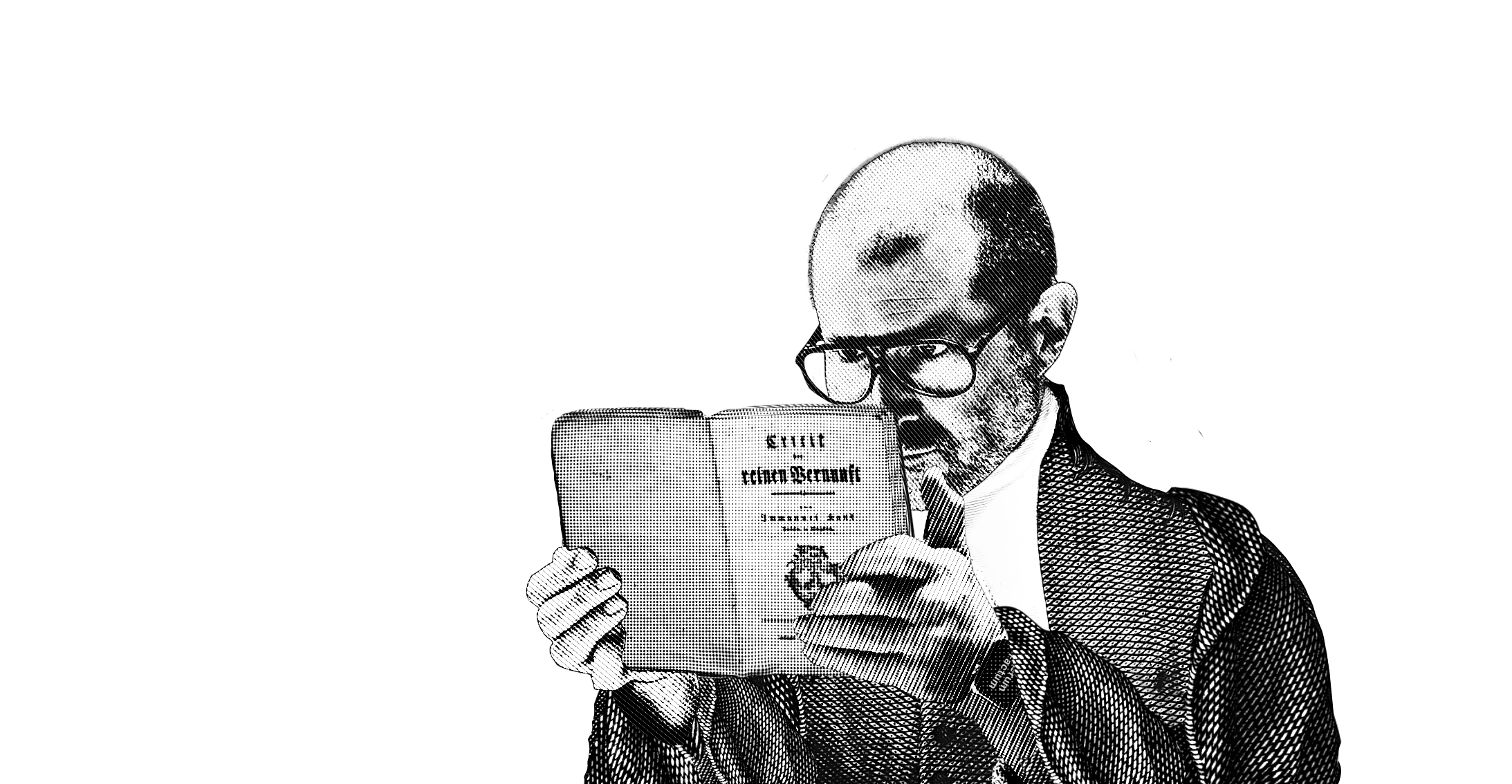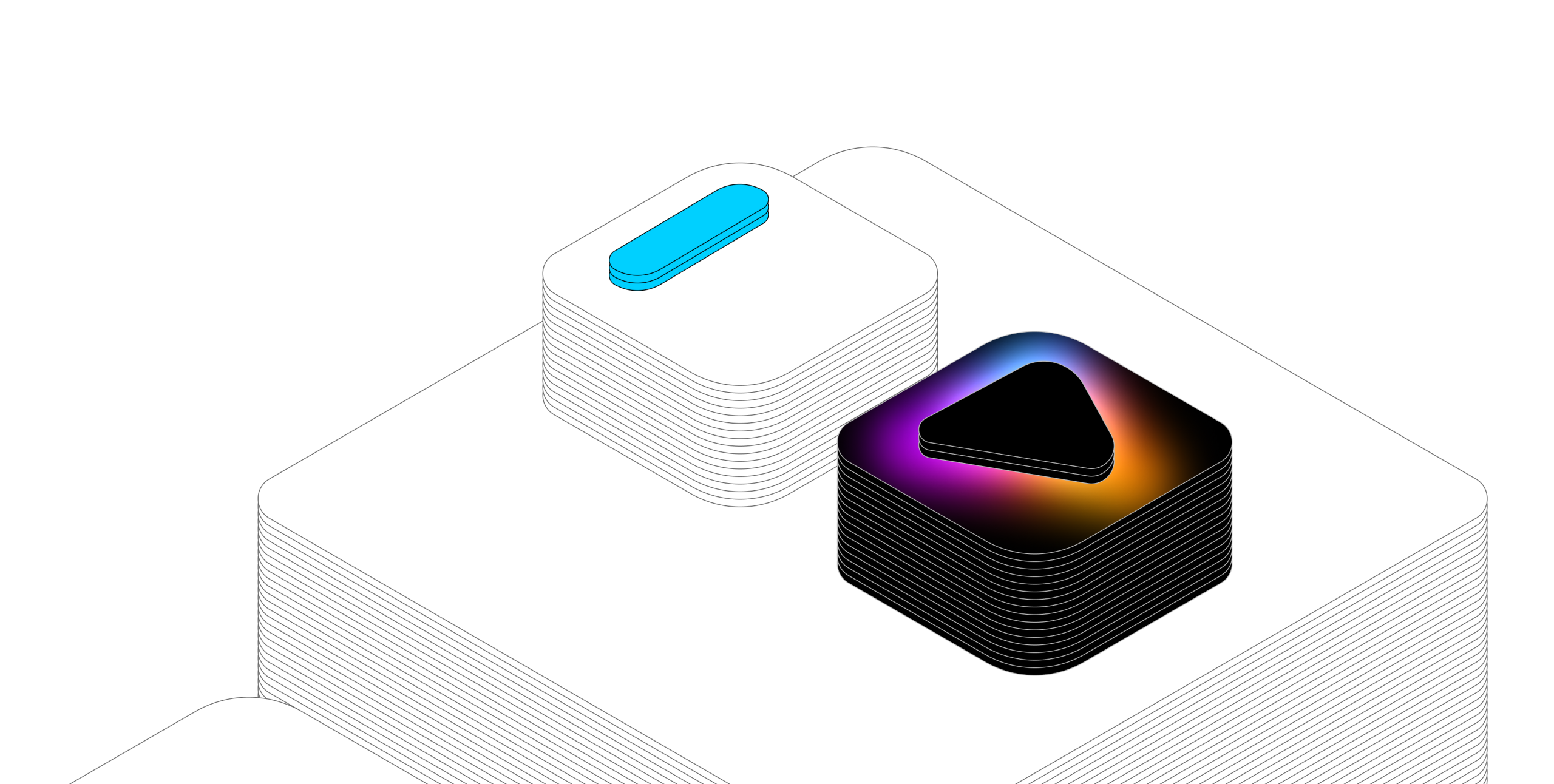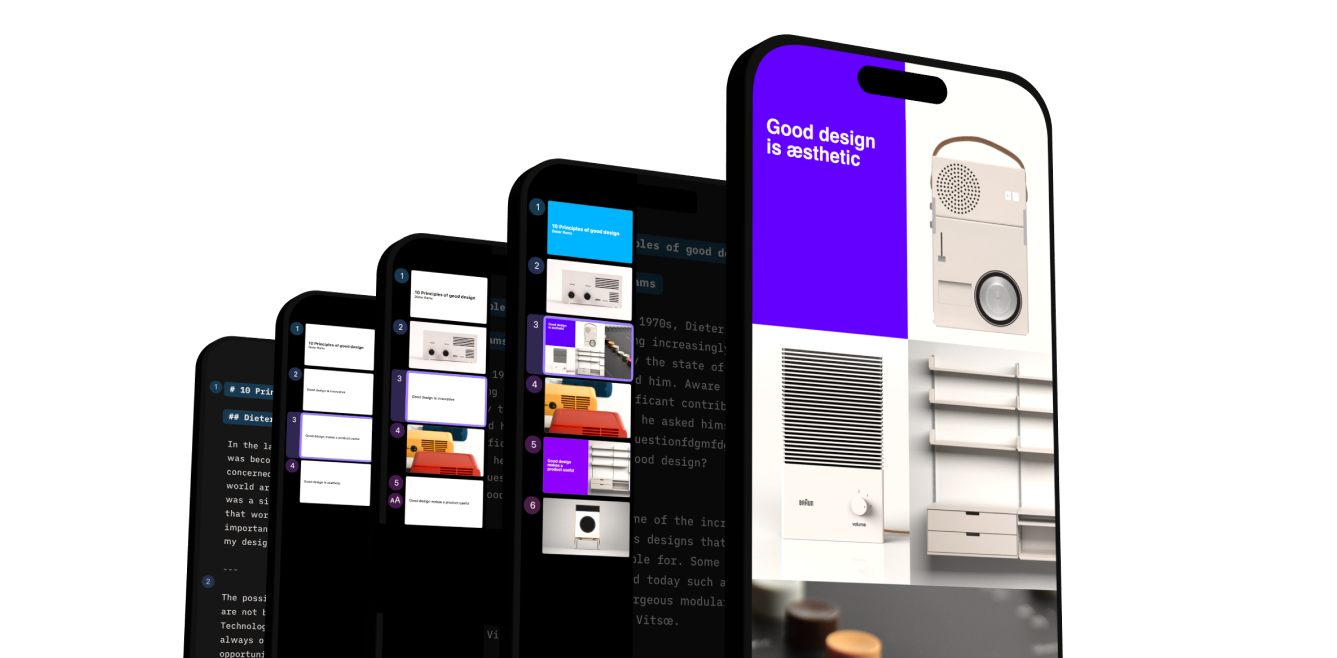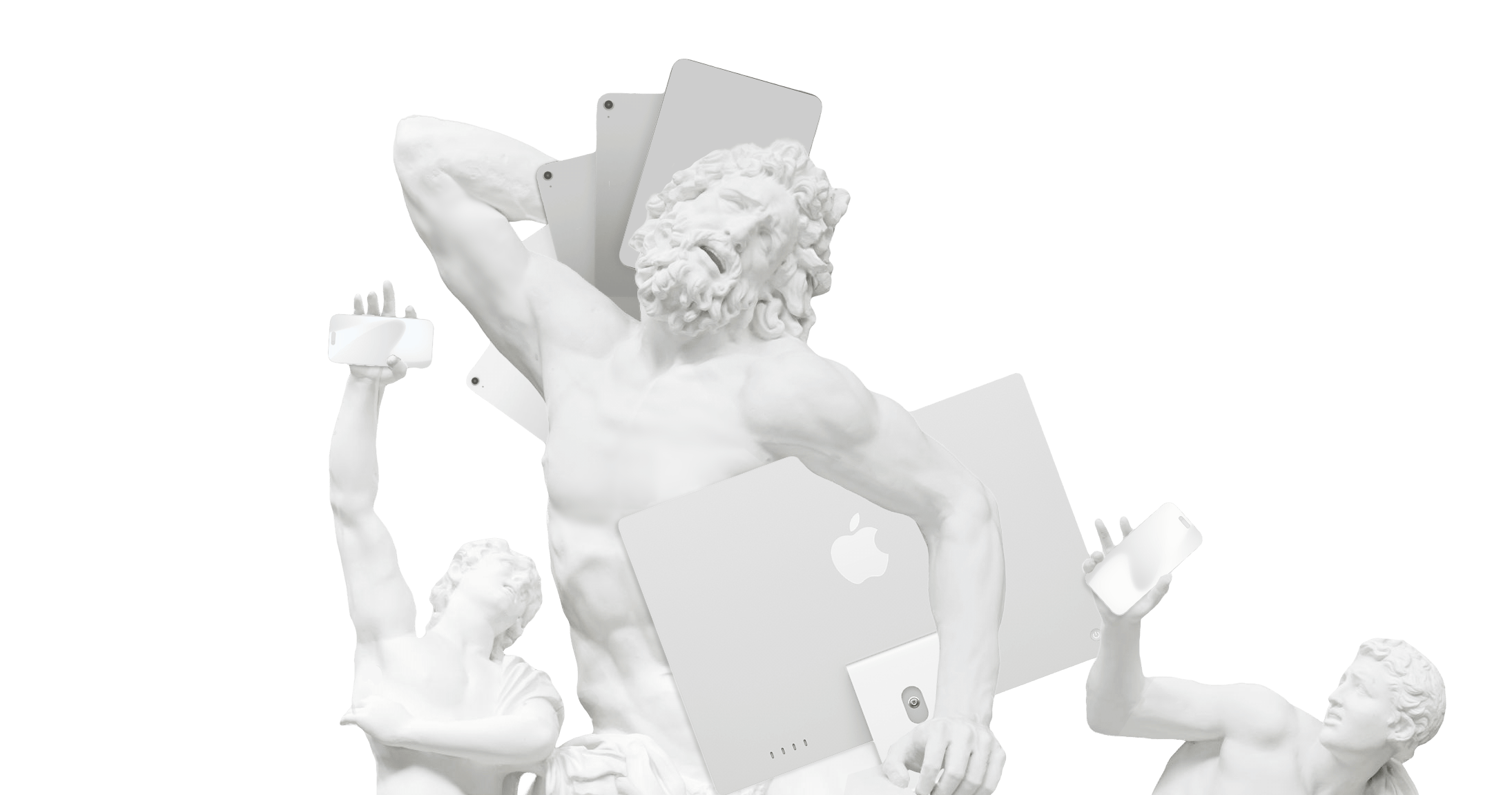Over the years, the designer behind the colorful iMacs, the iPhone, and the Apple Watch has come to sound more and more like a reincarnation of Aristotle. At Apple his discourse on form, essence and matter read as high-concept marketing. But bit by bit, step by step, it started to feel almost like the opposite.
His 2021 CCA Commencement Address felt like a genuine meditation on design.1 Last week, at a PR-event for an Multibillion e-commerce platform, no less, he gave what amounted to a masterclass in design philosophy. In the span of an hour, Sir Jony Ive echoed Plato, Aristotle, and Wittgenstein, with clarity, grace and humility.2
So you start to wonder: is old school philosophy, “love for wisdom”, the secret sauce of his new company, LoveFrom? Or does philosophy find us when we’re really, really serious about what we do? Or did he just get better at high-concept marketing?
Making and Being
We are what we make
Design and Philosophy connect through Maker’s Knowledge.3 If philosophers tried to design, they’d communicate more clearly. If designers studied philosophy, they’d understand better what it is that they do.
Giambattista Vico built that bridge from the thinking side. He stated that we only truly know what we make ourselves.4 Jony Ive builds it from the making side. For him, what we create reveals who we are.
“What we make stands testament to who we are.”5
According to Vico, we understand the world by creating and re-creating it. According to Ive, what we create shows who we truly are. He added that what is most revealing about who we are is “what we do when no one sees.”
“It’s what we do when no one sees, and […] I think that[…] it’s […] a powerful marker of who we truly are”6
Knowing through making and knowing who we are through what we make are not the same thought. But they’re delightfully linked. We learn by creating, and we, as Nietzsche would say, “become who we are” through what we create.
A maker of tools
Ive may speak like a philosopher, but he sees himself as a simpler man: “I’m just Jony.” he says at the very end.7 Sir Ive is in fact “just Jony”, one of the carpenters, shoemakers, midwives Socrates speaks of:
“…about being toolmakers […] I’m very clear and very proud that that’s my occupation and that’s my practice”8
Socrates climbed to the highest heights of philosophy by talking about shoemakers, midwives, and carpenters, in a time when society categorically looked down on people working with their hands.9 Jony Ive turned into something like a philosopher by going to the extremes of craft:
“When somebody unwrapped that box and took out that cable and they thought “somebody gave a shit about me” I think that’s a spiritual thing”10
“Giving a shit” as a “spiritual thing”? That sounds like the bold Satyr Socrates.11 If you work in design, you know what he means. “What I am thinking about now becomes a thing, and that thing will make someone I don’t know realize that I thought of them.” It’s a beautiful moment. Here’s the opposite:
“What used to depress me is this sense that ‘solving a functional requirement, [and] then we’re done.’ But, of course, that’s not enough. That’s not […] the characteristic of an evolved society, of an evolved species…”12
So, here we learn that Ive is not a utilitarian. He’s Aristotelian though and thorough, equally obsessed with the unity of form, matter, and essence as Aristotle in his Metaphysics. Next, we learn that he is definitely not a positivist.
Measuring Design
Creating careful experiences
And while we don’t know if Ive reads Aristotle in the original, he speaks like a man of high culture. He sees design as a sign of culture and sophistication. And, again, he ignites the light of philosophy when he explains in what sense taking care of what we make is a spiritual matter.
“…the excitement that somebody is going to experience something that they don’t even know exists yet. And even though it was a small thing, it would come from a place of love and care.”13
He went pretty far now. So, unsurprisingly, he’s about to let the pendulum swing back to cynicism. He understands the type of power his “love and care” has built at Apple. There’s a painful difference between art and design. Art can do what it wants, it doesn’t have to do anything. Design must obey the logic of economy, the law of numbers, and money. And he doesn’t like it:
“There is this… it used to infuriate me before I came to a more generous interpretation of why this happens. But people generally want to talk about product attributes they can measure easily with a number… […] schedule cost, speed, weight… Anything where you can generally agree that six is a bigger number than two. And I understand why…”8
Again, design is not art. Design makes things that need to work and make money. Still, well done design thinks long term. Good design is economical for both the company and the consumer. A good product costs more, but lasts longer. That’s common sense. But…
An insidious lie
Sadly, good design stands in harsh contrast to today’s economy of “predetermined breaking points”, which puts shareholder value over customer value. But there’s something else that design provides, something that offers a value that cannot be fully measured.
“…but the problem is that much of my contribution… and the contribution of other creatives, you can’t easily measure with a number.”14
The most precious matters, health, love, beauty, happiness, and delight, can’t be measured. And while design is an industrial endeavor that cannot break its ties to the often depressing measurable mechanics of the economy, good design can get awfully close to philosophy and art. Good design thinks intelligently, it respects the user, it respects the environment, it thinks ahead, it empowers, changes, and it can bring joy.
“The insidious lie follows which is we spend all our time talking about attributes because we can easily measure them. Therefore this is all that matters And that’s a lie It’s important but it’s a partial truth and all of the stuff that I think designers and other creatives um can contribute to an experience or to a product um that can make it delightful to use and joyful to use as well as more productive Um if it’s delightful and joyful things tend to be used more”15
To make delightful and joyful products in spite of the economic reality and the industry’s insane obsession with numbers, it seems like designers need to be at least somewhat subversive.
Words matter, opinions don’t
The following quote speaks volumes about the ongoing struggle of a passionate designer struggling with the economic reality. Few things are as frustrating as arguing with people who only believe in numbers. Ive knows the situation all too well:
“Or it gets even more demeaning, it can be just ‘well that’s your opinion.’ Try telling your heart surgeon, ‘Well, that’s your opinion,’ and you having a go yourself.”16
Designers are not heart surgeons, but the more experienced we move closer and closer to what philosophers would be, if they had to earn a salary in the industry.
“I know we both care about the words we use because they affect the way we think. And the words that we use to frame a problem are some of the most important.”17
Like a 21st century Wittgenstein, he says something along the lines of “The limits of my language mean the limits of my world.”. And then, in chess notation, he deserves three exclamation marks for pointing out how important and delicate the words are that we use to frame a problem. Because if we frame it only so slightly wrong, we can’t really solve it.
Design and Time
Beautiful efficiency
Sir Jony Ive earns another exclamation point for his concession to efficiency:
“…it’s hard to do quality and speed and cost and other things, but um I think I think there is a beauty to working efficiently”18
There’s a lot to unpack here: Design takes time. Always. There simply is no fast, good design. It always takes a lot of time to make things that save others even more time. And that’s the beauty of good design. We invest a lot of time in saving others even more time. Over time, as we change things, we have change as well, we have to.
Design shouldn’t be rushed. “There’s a beauty” in making efficient tools that allow us to work efficiently. And there’s a meta-beauty to having an efficient process for making those efficient tools.
Change is painful
In a typical design process, often, we end up doing what we initially sketched. Exploring all the options through the full design process, we understand better what we do and come back to the initial approach. We do what we initially did, but on a higher level, with a deeper understanding. We can’t just always take the first sketch, because we need to know what we do by exploring all options. Most designers would agree that often we end like we finish, just more mature. Most definitely, Ive has had this experience more than once. But he says, somewhat surprisingly:
“I do believe that we go through chapters and seasons, and the painful part is the conclusion of one and the beginning of the next, where we have to adjust and we change our approach. What doesn’t work is that we assume that how we start is how we’re gonna finish.”19
Here, he is not talking about that very common paradox that we end up doing what we initially sketched out. Design changes society. And as society changes, we need to change to continue to do good work. And this process can be very painful. Especially if your design has influenced the world in an unforeseen negative way.
“I think we have to be very clear that we’re in a constant state of flux….”20
Heraclitus famously said: “Everything flows,” and “We cannot step twice into the same river.” Ive quickly moves from Heraclitus to Kant’s Critique of the Practical Reason:
The Importance of Values
No compromises on principles and values
“What we’re not gonna compromise [is][…] the very clear focus on your principles and your values and your motivations.”21
And while there’s some Ethics of Duty packed in there, his Deontological tone echos from a far far distance from the very measurable monetary reality he helped build at Apple. Which moves his inner cynic to a slow early morning yawn:
“I think the alarm bells always go off for me when I think ‘Why did I do that? Has a [my?] motivation shifted?’ and that’s when I’ve […] really been upset with myself and disappointed with myself…22
Self awereness
Again, you can clearly see just how much his philosophical mind struggles with the economic reality. You can read the fights with Tim Cook between the lines. One can easily imagine how much the design philosopher Ive struggled in a numbers-dominated Apple.
“if […] our motivations and values remain the same we will find ways to be the control freaks we were born to be, or, of course, we can say ‘care’ care as much as we [should?]… but let’s be honest…”23
In other words: A great designer is a control freak who pretends that he cares. Point is: Ive has humor and he’s self-aware, and he is definitely not a fan of a numbers-only approach.
On Ideas
Imagination
In a different context, Ive previously said that “Without imagination, without profoundly new thinking and potent ideas, our practice has no purpose.”24
Science needs art as much as art needs science.25 You can’t do science without creativity, and you can’t produce art without science. Despising the worldview that only acknowledges what can be measured, weighed and counted, Ive embraces Plato, by praising the “idea” in the highest of tones:
“If you’re dealing with concepts that can’t be measured with numbers, if you’re dealing with ideas that always, if you think about the evolution of an idea, it always starts off as a thought.”26
The Platonic, the Artistotelic and the Ivean idea
Why is Ive so excited about ideas? Ideas seem to be the most precious spiritual goods. What ideas is he referring to? Plato’s or Aristotle’s ideas. As a designer and maker, Ive likely thinks more in Aristotle’s terms, seeing the idea as the complete unity of form, function, and matter. According to Aristotle, the idea is “what a real thing really is”. Which is fundamentally different from Plato’s idea: a perfectly ideal super entity up in the sky above us.
Knowingly or unknowingly, Ive still sounds a bit more like Plato—especially when he then ties his notion of the idea to “maieutic dialectics” (I know how freaky that sounds…), the method of uncovering the truth by going back and forth in a dialogue.
“And then a, you know, and then a tentative discussion… one of the things I realized is just how you know these ethereal thoughts these fragile concepts, are precarious.”27
“Ethereal thoughts.” Definitely Plato over Aristotle, here. So what’s up with Ive’s idea? Let’s check his 2021 CCA Commencement Honorary Doctorate Address, where he explains the Ivean Notion of the Idea in Design:
“Ideas by definition are always fragile. If they were resolved, they wouldn’t be ideas. They would be products that were ready to ship. I’ve come to learn that you have to make an extraordinary effort not to focus on the problems which are implicated with any new idea. These problems are known. They’re quantifiable and understood. But you have to focus on the actual idea which is partial, tentative, and unproven. If you don’t actively suspend your disbelief, if you don’t believe there is a solution to the problems, of course, you will lose faith in your idea. That is why criticism and focusing on the problems can be so damaging, particularly in the absence of a constructive idea. Remember, opinions are not ideas. Opinions are not as important as ideas. Opinions are just opinions.”
An idea seems to be a delicate key that locks or unlocks a designer’s core belief. The belief that “there is a solution.” He repeatedly states that opinions are not ideas. Opinions enemies, dangers, mere opinions. They need to be held at a distance.
Working Culture
The “danger of actually listening“
One of the most delightful parts of the interview is where Ive speaks about working culture:
“I think a small team of people that really trust each other is […] fundamentally important… that trust each other, that care about each other. If you care about, you know, then you might be in danger of actually listening.”28
Epicure puts it this way: “Of all the things which wisdom provides to make us entirely happy, much the greatest is the possession of friendship.” Employees are neither friends nor family. They get paid, they can get in irreparable trouble with each other, and they can get fired. But we do work better in a friendly, humane, trusting way than in cut-throat competition. And, with that, we cut back to Plato’s praise of the idea:
What kills ideas
“…what kills most ideas [is] people [that are] desperate to express an opinion, and, really, let’s be very clear, opinions aren’t ideas.29 I was gonna say something really rude then, but I won’t.”30
Oh, please, Socrates, let us hear that cheeky insult. Was it also about pubescent boys?31 And again, Ive gets very emphatic talking about ideas:
“One thing that terrifies me: I know that I’ve missed ideas that came from a quiet place from a quiet person, and that really scares me cause I don’t know what I’ve missed.”32
Now we know why the Magic Mouse has its charging port on the bottom: the designer who proposed placing it at the front was not overruled, but super introverted.
“This nagging feeling in my tummy”
There’s a lot more, like the excitement of modernism over materials, and all the bent tubes, AI, and what he might be up to next, because there is some overlap with what we do at iA…33 But let’s finish with the full context with this initially quoted pearl:
“a great cabinet maker finishes the back of a drawer even though it’s unlikely it will be seen. [..] In the same way, I think a mark of how evolved we are as people is what we do when no one sees. And […] it’s a powerful marker of who we truly are. […] I would be haunted […] if all we did was the outside[…] I would have this nagging feeling in my tummy that we were just being superficial.”34
Conclusion
Jony Ive’s words walk like philosophy, talk like philosophy, and think like philosophy. Whether his ideas were shaped by long nights in the workshop or long days with a bookshelf, they mirror Vico’s Maker’s Knowledge, Aristotle’s Metaphysics, Kant’s ethics, Wittgenstein’s language philosophy, and Epicurus’ quiet friendships. If it’s sales or genuine philosophy or both remains to be seen.35
Does Ives read philosophy? We could speculate all day. Or we could just ask him. Not easy, because there’s no way to contact information available.

Footnotes
-
Jony Ive’s CCA Commencement Address and Advice for the Graduating Class ↩
-
More on Maker’s Knowledge in our previous post ↩
-
“One truly understands only what one created.” –Giambattista Vico, De antiquissima sapientia Italorum ↩
-
Minute 3:50 ↩
-
Minute 40:23 ↩
-
Minute 58:53 ↩
-
In The Clouds, Aristophanes mocks Socrates as an airhead messing with ridiculous ideas and instruments. It’s part satire, part social commentary, ridiculing Socrates for corrupting the youth by bringing technical and speculative thinking down into the mud of everyday life. ↩
-
Minute 12:38 ↩
-
See, for example. Gorgias, § 494d, you don’t need a lot of sophistication to understand that in the following dialogue Socrates talks about all types of itches and scratches…
Socrates: […]tell me whether a man who has an itch and wants to scratch, and may scratch in all freedom, can pass his life happily in continual scratching.
Callicles: What an odd person you are, Socrates — a regular stump-orator!
Socrates: […] You are such a manly fellow. Come, just answer that.
Callicles: Then I say that the man also who scratches himself will thus spend a pleasant life.
Socrates: And if a pleasant one, a happy one also?
Callicles: Certainly.
Socrates: Is it so if he only wants to scratch his head? Or what more am I to ask you? See, Callicles, what your answer will be, if you are asked everything in succession that links on to that statement; and the culmination of the case, as stated — the life of a pubescent boy […]
Callicles: Are you not ashamed, Socrates, to lead the discussion into such topics? ↩ -
Minute 12:48 ↩
-
Minute 13:26 ↩
-
Minute 20:31 ↩
-
Minute 21:36 ↩
-
Minute 20:44) ↩
-
Minute 23:46 ↩
-
Minute 23:35 ↩
-
Minute 25:56 ↩
-
Minute 26:19 ↩
-
Minute 26:26 ↩
-
Minute 26:42 ↩
-
Minute 27:05 ↩
-
Jony Ive’s CCA Commencement Address and Advice for the Graduating Class ↩
-
“There are no areas that are ‘purely scientific’ and others that can only be ‘pure art’, with a domain in between where the two mix; rather, artistic procedures occur throughout the sciences, especially where new and surprising discoveries are made.” Paul Feyerabend, Science as Art
The original quote says: “Es ist nicht so, daß es Gebiete gibt, die ‘rein wissenschaftlich’ sind, und andere Gebiete, die nichts anderes sein können als ‘reine Kunst’, und dazwischen einen Bereich, in dem sich die beiden Dinge vermischen, sondern künstlerische Verfahren kommen überall in den Wissenschaften vor und besonders dort, wo neue und überraschende Entdeckungen gemacht werden.” Paul Feyerabend, Wissenschaft als Kunst ↩ -
Minute 28:29. Plato has a different relationship with numbers. According to Plato shares the Pythagorean belief in a cosmos ordered by numerical harmony. f. ex. Timaeus, 35a: “He [the Demiurge] began to distribute the whole thereof into so many portions as was meet; […] First He took one portion from the whole; then He took a portion double of this; then a third portion, half as much again as the second portion, that is, three times as much as the first; he fourth portion He took was twice as much as the second; the fifth three times as much as the third; the sixth eight times as much as the first; and the seventh twenty-seven times as much as the first.” The soul itself is structured according to mathematical ratios, emphasizing the intrinsic link between numbers and the fabric of existence. This wouldn’t have put Plato in Cook’s camp, as Plato’s Pythagorean affection with numbers was based on a fundamentally different myth than capitalism. ↩
-
Minute (28:48) ↩
-
Minute 29:08 ↩
-
Jony Ive’s CCA Commencement Address and Advice for the Graduating Class ↩
-
Minute (29:31) ↩
-
See footnote 4 ↩
-
Minute (30:13) ↩
-
Our goal is to support intellectual growth—especially for children—through reading and writing tools designed with as much care as the content they help create. Like LoveFrom, we’ve spent an unreasonable amount of time crafting our own fonts, guided by a shared focus on clarity, delight, and essential form. While LoveFrom moves from design toward philosophy, historically, iA approaches design from a philosophical foundation. ↩
-
Minute 40:04 ↩
-
One week after this interview, Ive announced the collaboration with Sam Altman. He sold his hardware company for 6.4 Billion. In other words, it not like he has become philosophically indifferent to increasing his net worth. That doesn’t mean that he doesn’t have a philosophical mind either, but to fully understand a person we need to compare what they say and what they do. ↩








